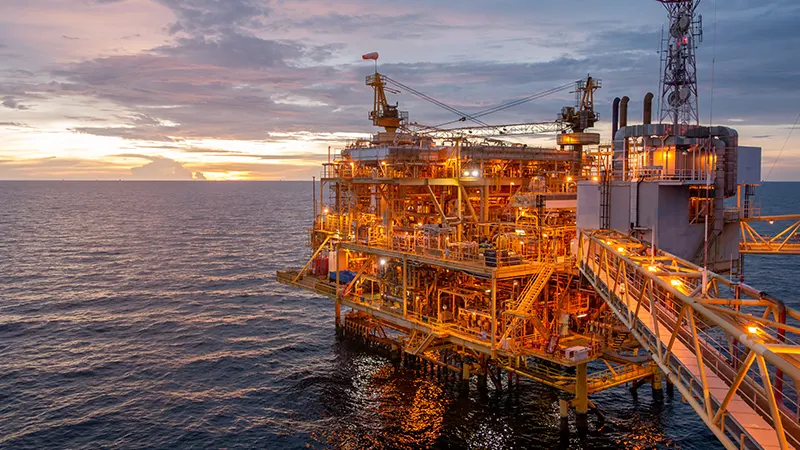

Well-Safe Solutions has secured a significant multi-year contract with EnQuest.
The scope, expected to generate over US$45 million in revenue, will be carried out using the Well-Safe Defender and involves a minimum of 100 days of operations in 2026 and at least 130 days in 2027. The contract also includes options for additional work between 2028 and 2034, establishing a long-term strategic partnership and securing key supply chain resources in the North Sea well into the next decade.
This contract marks a major milestone for Well-Safe Solutions, reinforcing its position as a leading player in the UK decommissioning sector. It also reflects the company’s strategic shift in the first half of 2025 to offer full well lifecycle services in response to rising demand for integrated, multi-phase campaigns.
Phil Milton, Chief Executive Officer at Well-Safe Solutions, said, “This contract is a testament to the trust our clients place in us and the consistent performance of our teams. It marks a pivotal moment in our journey and sets the tone for the next phase of our growth.”
Despite the challenges facing the sector in 2025, this award represents a significant turning point. The industry is preparing for an anticipated rise in demand from 2026 onwards, at a time when the availability of mobile offshore drilling units (MODUs) has sharply decreased. With only seven semi-submersibles currently in or near the region—many either committed long-term or stacked—market capacity remains tight.
Chris Hay, Chief Commercial Officer at Well-Safe Solutions, added, “This contract award reflects not only Well-Safe’s technical capabilities but also its ability to respond to market needs with agility. We’re proud to support EnQuest in this critical campaign and look forward to delivering a safe and efficient operation.”
The contract award follows successful decommissioning campaigns completed with several other UKCS clients using the Well-Safe Defender and Well-Safe Protector, highlighting Well-Safe’s reputation for operational excellence. Since its mobilisation in April 2023, the Well-Safe Defender has consistently delivered top-quartile performance, with rig uptime exceeding 98%, thanks to the dedication and collaboration of both offshore and onshore teams.
Steve Bowyer, EnQuest’s North Sea Managing Director, commented on the contract, “EnQuest is delighted to have chosen Well-Safe Solutions to support the next phase of our Group decommissioning plans. Having completed the plugging and abandonment of more than 35% of all wells decommissioned across the northern and central North Sea over the past three years, EnQuest is proud to be one of the most prolific decommissioning operators in the North Sea, employing innovative technologies and operating techniques to deliver top-quartile decommissioning performance. Accordingly, we look forward to executing the upcoming activity in a safe and efficient manner, alongside the Well-Safe team.”
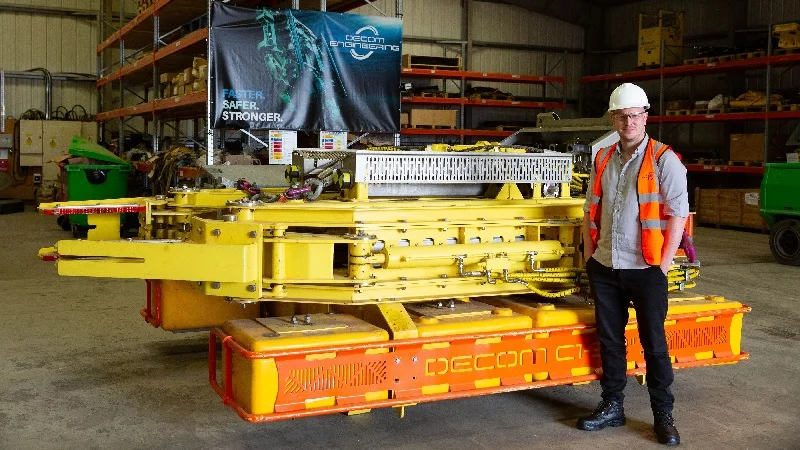
 Decom Engineering has appointed Nick McNally as managing director, to drive ahead the company's strategy on accelerating international expansion, scaling operations and strengthening its position as a leading provider of patented cutting technologies to the global energy industry
Decom Engineering has appointed Nick McNally as managing director, to drive ahead the company's strategy on accelerating international expansion, scaling operations and strengthening its position as a leading provider of patented cutting technologies to the global energy industry
McNally was formerly the company’s commercial director, under whose leadership Decom has rolled out a new ultra-light Chopsaw with improved cutting performance, which has been deployed across complex subsea projects in challenging offshore environments, and the company has experienced recent project wins in Australia, South America and Europe.
The company has also consolidated operations in Aberdeen, closed its Northern Ireland facility, and restructured its internal systems and roles. The company is actively progressing ISO certification as well as additional IP coverage and is engaged with the Fit for Offshore Renewables programme, enabling greater access to clean energy markets and expanding opportunities in offshore wind.
Decom plans to expand its workforce from 16 to over 25 staff within the next 18 months, with new roles across engineering, operations, and business development.
McNally said, “This is an exciting new stage for Decom as the business evolves from a highly respected niche engineering firm into a globally recognised technology partner.
“With new markets opening up and recent contract wins in Australia, Brazil and the Gulf of Mexico, the opportunities ahead are considerable and my focus will be on building the infrastructure, capability and culture to meet that growth head-on.”
“With international demand growing and increasing interest in our cutting technology, we’re focused on scaling responsibly, strengthening our systems, investing in our people and remaining agile, which enables us to move into new markets such as offshore wind and onshore decommissioning.”


Saudi Arabia’s ADES International Holding has signed a deal to acquire rival offshore rig operator Shelf Drilling in a transaction valued at US$379.8mn.
The deal, subject to shareholder approval and other closing conditions, is expected to complete in the fourth quarter of 2025.
Once finalised, the combined entity will operate 83 offshore jack-up rigs, including 46 premium units, across key shallow-water basins worldwide, with a total backlog of US$9.45bn as of 30 June 2025.
ADES anticipates achieving annual operational cost synergies of US$40mn-50mn over the medium term and plans to settle Shelf Drilling’s existing debt obligations. The company also said it would work to optimise the new group’s capital structure and operational efficiency.
Dr. Mohamed Farouk, CEO of ADES, said, "Over the past years, we have unlocked new geographies and deepened our strategic reach. With this landmark transaction, we reinforce our position as a market leader in shallow-water offshore drilling, offering superior services to our client base alongside enhanced scale, asset quality and operational reach.
“As part of the transaction, we will add 33 jackups and a dedicated, experienced workforce, supporting expansion into additional regions and further strengthening our global footprint.”
“Today’s announcement delivers immediate and compelling value to our shareholders, reflecting both the strength of our business and the dedication of our employees. Over the past 13 years, Shelf Drilling has built a resilient company with an outstanding safety track record and a reputation for operational excellence.
“This transaction unites two highly complementary organizations, and we are confident that the combination will unlock the full strategic value of our global fleet and operations. We look forward to working closely with the ADES team to ensure a seamless and successful integration,” said Greg O’Brien, CEO of Shelf Drilling.
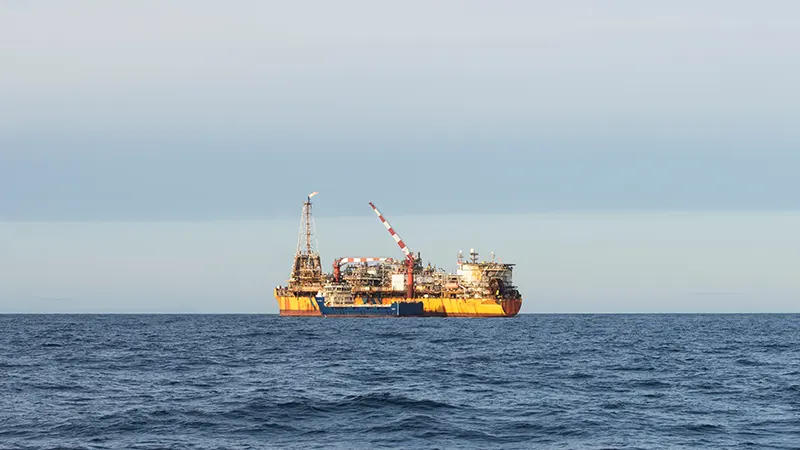
 The Agogo FPSO has generated first oil for the National Agency for Petroleum, Gas and Biofuels (ANPG) and Azule Energy, actualising the much anticipated Agogo Integrated West Hub project offshore Angola
The Agogo FPSO has generated first oil for the National Agency for Petroleum, Gas and Biofuels (ANPG) and Azule Energy, actualising the much anticipated Agogo Integrated West Hub project offshore Angola
This comes in less than three years since the Agogo IWH project began in February 2023, with a phased development approach. It involved appraising-driven process, de-risking the full field exploitation. With a well-coordinated effort to simultaneously manage activities across reservoir, engineering and procurement, the deepwater project is said to have been achieved in record time.
The Agogo project involves the development of two fields, Agogo and Ndungu, in the West Hub of Block 15/06. The Agogo IWH project operated by Azule Energy in Block 15/06, with a 36.84% stake alongside partners Sonangol E&P (36.84%) and Sinopec International (26.32%), is set to add substantial production to Angola's energy landscape. Together, the two fields have estimated reserves of approximately 450 million barrels, with projected peak production of 175,000 barrels per day, produced via two FPSOs (Agogo and Ngoma).
An ode to technological innovation and lower-emissions future, all topsides and marine systems of the Agogo FPSO are designed to be fully electric. Touted as a 'green' FPSO, it features a pilot carbon capture and utilisation/storage (CCUS) unit to recover remaining CO2 volumes. Additionally, the FPSO benefits from combined cycle power generation.
"This new milestone that we have recorded in the Agogo Project reinforces our certainty that we have made the right investment in technological innovation and the valourisation of Angola's natural resources, in an industry where it is essential to combine sustainability, efficiency and inclusion procedures. It is worth highlighting that this is an FPSO prepared to reduce carbon emissions, aligning with energy transition objectives. Furthermore, it demonstrates a strong investment in national human capital, with 80% of the workforce comprised of Angolans,' said the chairman of the Board of Directors of ANPG, Paulino Jerónimo.
"The startup of the Agogo IWH project, sanctioned just months after Azule Energy's formation, represents a defining moment for our company," said Adriano Mongini, CEO of Azule Energy. "It demonstrates not only our technical capabilities but also our firm commitment to supporting Angola's energy landscape. This achievement advances our production goals whilst showcasing our dedication to responsible energy practices through pioneering emission reduction initiatives. We are immensely proud to contribute to Angola's energy future and to set new standards for environmental responsibility in offshore operations."

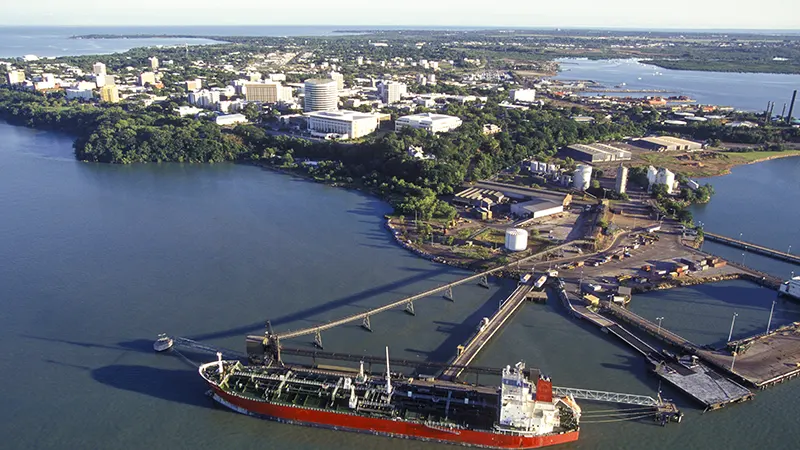 Australia's Centre of Decommissioning (CODA) has released a new study exploring the infrastructure, capabilities and regulatory systems required to support offshore oil and gas decommissioning in the Northern Territory.
Australia's Centre of Decommissioning (CODA) has released a new study exploring the infrastructure, capabilities and regulatory systems required to support offshore oil and gas decommissioning in the Northern Territory.
Its new Northern Territory Decommissioning Location Study evaluates ports and surrounding industries that could facilitate the dismantling, recycling and disposal of equipment recovered from the Browse and Bonaparte basins over the next 40 years.
The study confirms there are “credible opportunities” for the Northern Territory, that are most relevant to subsea infrastructure and mooring systems associated with assets such as Northern Endeavour, Montara, Blacktip, Barossa and Ichthys.
CODA’s CEO Francis Norman said the report highlights the importance of coordinated planning and investment across jurisdictions.
“The Northern Territory has a real opportunity to play a role in Australia’s offshore decommissioning future,” said Norman.
“By identifying practical pathways to build local capability and work in alignment with national infrastructure, this study supports a more collaborative and connected approach to end-of-life asset management.”
Specifically, Darwin Harbour offers multiple viable receival points, including the East Arm Wharf, Marine Supply Base, Darwin Ship Lift and the proposed Middle Arm Module Offloading Facility, the report notes.
The study also highlights that intermittent demand and limited local waste treatment capacity present challenges to establishing a dedicated and continuous decommissioning industry in the Northern Territory.
The findings also reinforce the importance of clear regulatory processes and long-term infrastructure planning.
This includes opportunities to integrate with national waste treatment networks and future facilities such as the Chandler geological repository and Whyalla’s Electric Arc Furnaces.
The study was commissioned by CODA and developed by Kent, drawing on its global decommissioning expertise to assess infrastructure needs and opportunities in the Northern Territory.
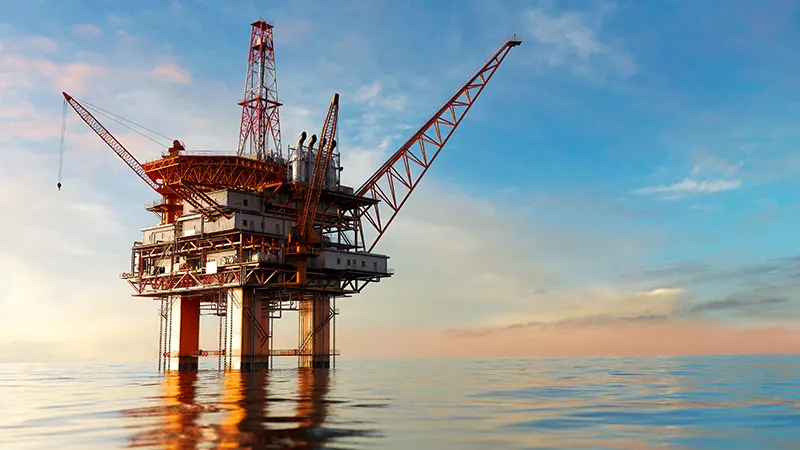
 Expro has reported robust financial results for Q2 2025, supported by strong operational execution and new technology deployments across key offshore markets, including the North Sea.
Expro has reported robust financial results for Q2 2025, supported by strong operational execution and new technology deployments across key offshore markets, including the North Sea.
The company posted US$423mn in revenue—exceeding its guidance—and delivered an adjusted EBITDA margin of 22%, marking its third consecutive record quarter. Free cash flow reached US$27mn, with adjusted free cash flow at $36 million.
CEO Michael Jardon credited the company’s consistent growth to strategic investment, cost discipline, and global execution, “Our new business wins are a testament to the trust our customers place in Expro and highlight our commitment to safety, service quality, and the delivery of cost-effective, technology-driven solutions throughout the well lifecycle.”
In the UK North Sea, Expro extended a three-year contract worth approximately US$30 million for well intervention, well services, and well testing—continuing a long-standing collaboration with a major operator. The company also achieved an industry first by deploying its Remote Clamp Installation System (RCIS) in the region—successfully running a fully hands-free upper completion, reducing installation time by 50% per clamp. The RCIS, developed with a super major, is already securing follow-on deployments.
These developments are part of a broader international push. In Q2 alone, Expro secured major contracts in Guyana, Mexico, Brazil, Angola, MENA, and Asia Pacific, reinforcing its diverse global footprint and offshore capabilities.
Read the complete story on Expro's official website here
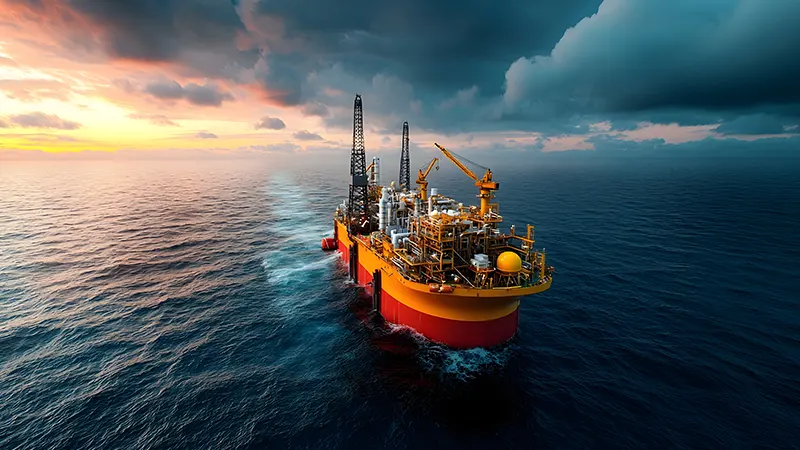
 Golar’s 3.5MTPA MK II FLNG will be deployed for contract start-up in Argentina during 2028, in line with a final investment decision following definitive agreements executed by Argentinian gas producers consortium, Southern Energy SA, and Golar in May 2025.
Golar’s 3.5MTPA MK II FLNG will be deployed for contract start-up in Argentina during 2028, in line with a final investment decision following definitive agreements executed by Argentinian gas producers consortium, Southern Energy SA, and Golar in May 2025.
The key commercial terms for the 20-year charter agreement include net charter hire to Golar of US$400mn per year, plus a commodity linked tariff component of 25% of FOB prices in excess of US$8/mmbtu.
The FLNG, currently under conversion in China, will sail to Argentina following her redelivery. The MKII FLNG will be moored in the San Matías Gulf near the FLNG Hilli, which is expected to start its 20-year charter with SESA during 2027. Combined, the two units have a nameplate capacity of 5.95MTPA, and the project expects to benefit from significant operational efficiencies and synergies from two FLNGs in the same area.
Regulatory and related customary closing conditions for the MKII FLNG project is expected by this year.
Golar’s Chief Executive Officer, Karl Fredrik Staubo, said, “Today’s FID marks another milestone for SESA in establishing Argentina as an attractive LNG exporter and building on Golar’s position as the market leading FLNG service provider. FID solidifies US$8bn of net earnings visibility over 20 years to Golar, with attractive upside potential in the FLNG commodity tariff component and through our shareholding in SESA. We look forward to continuing to develop the SESA partnership into a leading LNG exporter in South America.”
The SESA consortium comprises Pan American Energy (30%), YPF (25%), Pampa Energia (20%) and Harbour Energy (15%), as well as Golar (10%).
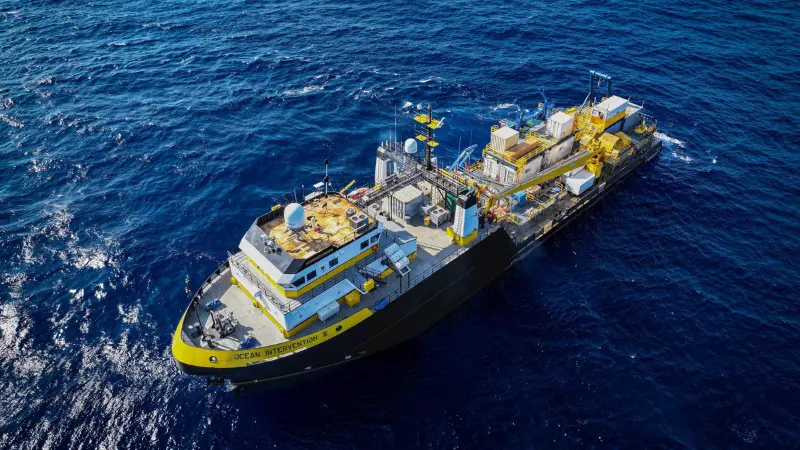
 Oceaneering International has announced its Subsea Robotics segment has upgraded the Ocean Intervention II (OI2), an oceanographic research vessel, in order to perform simultaneous autonomous survey operations.
Oceaneering International has announced its Subsea Robotics segment has upgraded the Ocean Intervention II (OI2), an oceanographic research vessel, in order to perform simultaneous autonomous survey operations.
The purpose-built OI2 was first launched in 2000 to carry out geophysical and geotechnical surveys. Earlier this year the vessel underwent significant upgrades to expand its capabilities and improve performance for modern survey demands.
Peter Buchanan, Senior Director of Survey, Products and Services, Subsea Robotics, Oceaneering, said, “The Ocean Intervention II provides a step change in survey data acquisition productivity with the ability to simultaneously collect AUV, towed geophysical and geotechnical data. We’re excited to offer this enhanced capability to our clients.”
Some of the enhancements included:
With its enhanced configuration, the OI2 transitions between AUV and towed geophysical surveys, and geotechnical sampling, supporting efficient multi-discipline campaigns.
When paired with Oceaneering’s remotely operated USV capabilities and global Onshore Remote Operations Centers, the OI2 becomes a key enabler of fully integrated, low-risk offshore surveys. The next-gen survey approach supports faster data acquisitions, improved decision-making and increased efficiency thro8ugh simultaneous operations.
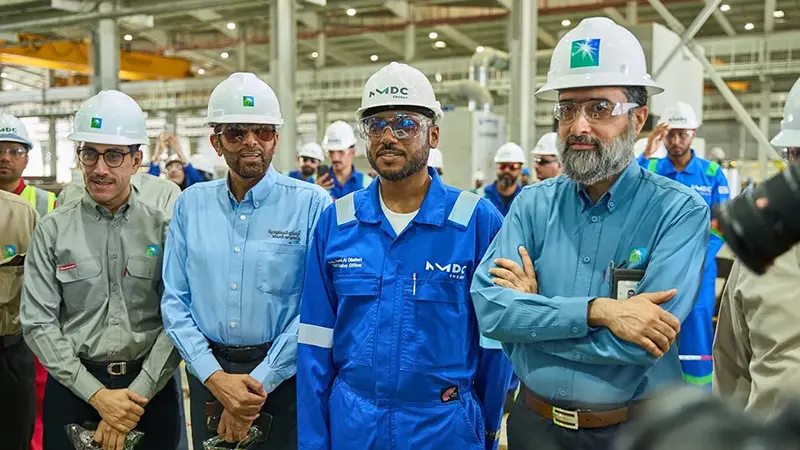
 NMDC Energy, a leading EPC (engineering, procurement, and construction) service provider for onshore and offshore energy industries, has officially started fabrication activities at its advanced facility in Ras Al-Khair, Saudi Arabia. The commencement of steel cutting signifies the start of full operations, reinforcing the company’s commitment to supporting Saudi Arabia’s industrial growth and energy development goals.
NMDC Energy, a leading EPC (engineering, procurement, and construction) service provider for onshore and offshore energy industries, has officially started fabrication activities at its advanced facility in Ras Al-Khair, Saudi Arabia. The commencement of steel cutting signifies the start of full operations, reinforcing the company’s commitment to supporting Saudi Arabia’s industrial growth and energy development goals.
The Ras Al-Khair yard, covering 400,000 square metres, is situated in the strategically important Ras Al-Khair Special Economic Zone. Designed to support both offshore and onshore projects, it has an annual fabrication capacity of 40,000 tonnes. The facility is equipped with advanced automation, digital tools, and provides comprehensive services including fabrication, rigging, modularisation, and maintenance for complex energy infrastructure.
With an investment of AED 200 million, NMDC Energy has created a safe, modern, and sustainable workspace aimed at reducing emissions and aligning with Saudi Aramco’s and the Kingdom’s energy sector needs.
Mohamed Hamad Almehairi,Chairman of NMDC Energy, said, “The start of fabrication in Ras Al-Khair is a significant step in our regional expansion. With over 51 years of experience, NMDC Energy is proud to bring its proven expertise to Saudi Arabia. This yard is not just an operational asset—it’s a strategic investment supporting industrial growth, local capability, and regional transformation.”
Currently, nine offshore jackets are in production for long-time client Aramco. This milestone enhances NMDC Energy’s presence in the Kingdom and aligns with Saudi Arabia’s Vision 2030 by adding new industrial capabilities. To support operations, over 1,800 skilled staff will be relocated from Abu Dhabi to ensure top-quality standards and seamless project execution.
The Ras Al-Khair facility plays a central role in NMDC Energy’s localisation efforts. The company has already reinvested billions of riyals into Saudi Arabia and aims to increase its iktva (In-Kingdom Total Value Add) score to 39% by 2025 and 51% by 2028.
Ahmed Al Dhaheri CEO Eng. said, “This facility underlines our commitment to supporting Saudi Arabia’s localisation agenda and delivering high-scale, complex projects. With decades of expertise, NMDC Energy is ready to support national industrial ambitions and energy infrastructure needs.”
As a key tenant in the Ras Al-Khair Special Economic Zone, NMDC Energy contributes to trade, job creation, and long-term investment in the region. The company plans to use the yard’s full potential to drive innovation and strengthen the energy and manufacturing sectors across the Gulf.
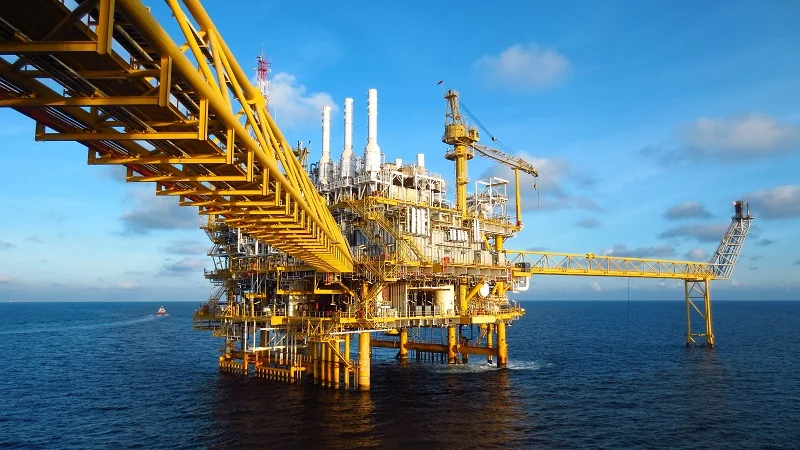
 SLB has acquired Stimline Digital AS, a leading well intervention software company.
SLB has acquired Stimline Digital AS, a leading well intervention software company.
Stimline Digital’s IDEX platform provides operators features powerful visualisation capabilities and enables a collaborative environment to optimise the planning and execution of well intervention operations. Powered by AI, the application enables operators to efficiently standardise digital workflows through all phases of interventions, from planning through to real-time execution and post-job analysis.
The IDEX platform will be integrated with SLB's data environment and advanced intervention applications for planning and modelling, providing operators with the ability to create intelligent, data-driven workflows and thus ensuring greater consistency, efficiency and performance for well interventions.
“With 80% of global production expected to come from mature fields by 2030, innovative digital technologies are needed to improve the success rate and economics of interventions,” said Frederik Majkut, president, Reservoir Performance, SLB. “Through this acquisition, we aim to scale adoption of the IDEX platform as an agnostic ecosystem to help the industry standardise cumbersome planning and execution processes. We will also integrate it with our technology stack and domain expertise to provide our customers with well intervention performance assurance.”
The MENA region could potentially be a strong market for SLB’s strengthened well intervention capabilities, given the prevalence of mature fields and the focus on EOR activities.
In addition to its well intervention capabilities, the IDEX platform will enable teams to collaborate on and publish digital well operations procedures with full traceability and control, as well as supporting the real-time execution tracking of these procedures.
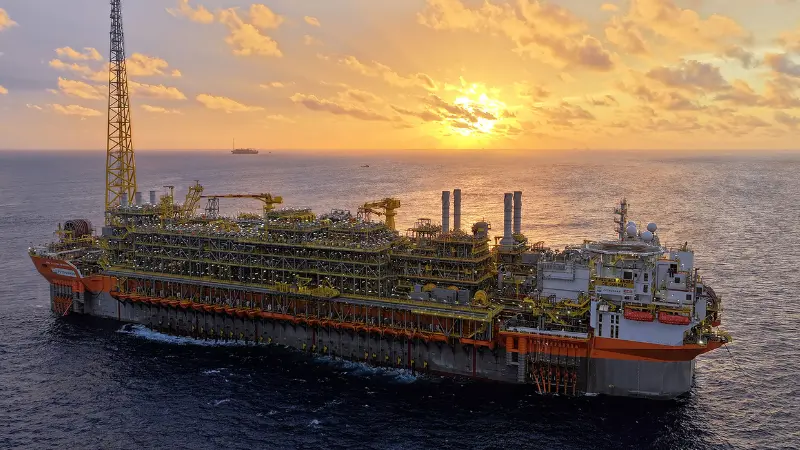
 Petrobras’ average oil, natural gas and natural gas liquids production grew by 5% in Q2 2025, reaching 2.91 million barrels of oil equivalent per day.
Petrobras’ average oil, natural gas and natural gas liquids production grew by 5% in Q2 2025, reaching 2.91 million barrels of oil equivalent per day.
The increased performance was mainly attributed to the ramp-up of FPSOs in the Búzios, Jubarte, Marlim and Voador fields; the peak production of the Marechal Duque de Caxias field, and the entry into production of the FPSO Alexandre de Gusmão in the Mera field.
In Q2, 14 new production wells came into operation; seven in the Campos Basin and seven in the Santos Basin. The FPSO Alexandre de Gusmão marked the fifth platform in the Mera field within the Santos Basin and began operations on 24 May, 2025, in a major step forward in Brazil’s production from the pre-salt layer. The gas injection also began in 25 June, 2025. The platform has the capacity to produce 180,000 barrels of oil per day, in addition to compressing and reinjecting 12 million cubic metres of gas per day.
The FPSO Marechal Duque de Caxias entered production on 30 October, 2024, in the Mero field, reached peak production on 19 May by producing 180,000 barrels of oil per day. In total, the unit will have 15 wells.
Last month the P-78 platform vessel left the Singapore shipyard and is en-route to Brazil, where production start-up is scheduled for the second half of the year. The platform will be the seventh until to be installed in the Búzios field in the Santos Basin pre-salt layer, with a production capacity of 180,000 barrels of oil per day, in addition to compressing up to 7.2 million cubic metres of gas per day.
Petrobras has achieved serval production records this quarter, including total operated production in Q2 2025 of 4.19 MMboed (previous record was 4.05 MMboed in Q4 2023; total own pre-salt production at 2.39 MMboed (previous record 2.33 MMboed in Q4 2023); and the Mero field platforms broke the operated production marks of 600,000 bpd of oil on 6 July, 2025.
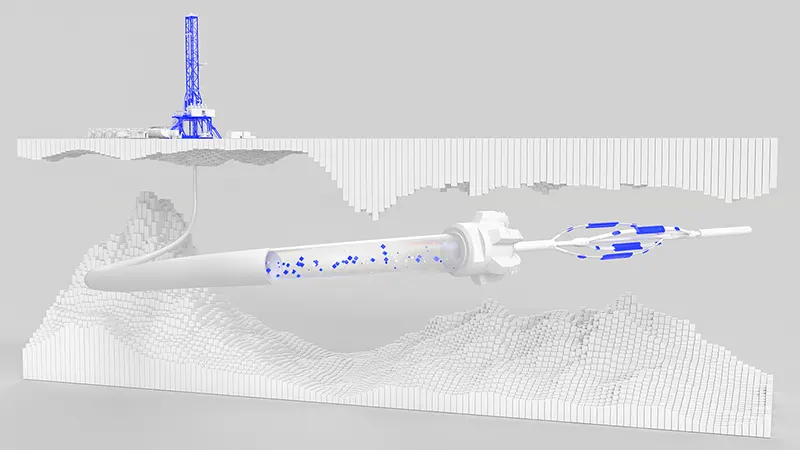
 SLB, a global energy technology company, has launched the OnWave autonomous logging platform, a first-of-its-kind solution designed to improve the efficiency and safety of formation evaluation in all well conditions.
SLB, a global energy technology company, has launched the OnWave autonomous logging platform, a first-of-its-kind solution designed to improve the efficiency and safety of formation evaluation in all well conditions.
The OnWave platform operates without the need for a wireline unit or cable. Its cable-free design allows it to be deployed in less than half the time of traditional wireline systems. It also permits drill pipe rotation and mud circulation during operations, reducing the risk of stuck pipe incidents and boosting overall well safety.
“The OnWave platform marks the beginning of a new era in formation evaluation,” said Frederik Majkut, president of Reservoir Performance at SLB. “By streamlining how we gather high-fidelity measurements downhole, we are opening up key opportunities for our customers to integrate data-driven decision making into their workflows across the well life cycle — from exploration through to production and recovery, he added.
The platform can be used in any well trajectory and does not require an SLB crew onsite. It autonomously handles key downhole tasks that would normally need surface-based engineers, including data acquisition and quality control. Uniquely, it maintains continuous communication with the surface, confirming tool status and position in real time — something most wireless logging systems cannot do. This ensures data quality and avoids the need for repeat runs.
The OnWave platform has been deployed successfully in various regions, including the United States and the Middle East. In South Texas, it cut landing time to total well depth from hours to just 27 minutes, a 70% reduction compared to traditional methods. Data processed at the surface delivered high-quality petrophysical and acoustic insights, enabling better completion and stimulation design, and helping to derisk field development for the operator.
Page 18 of 113